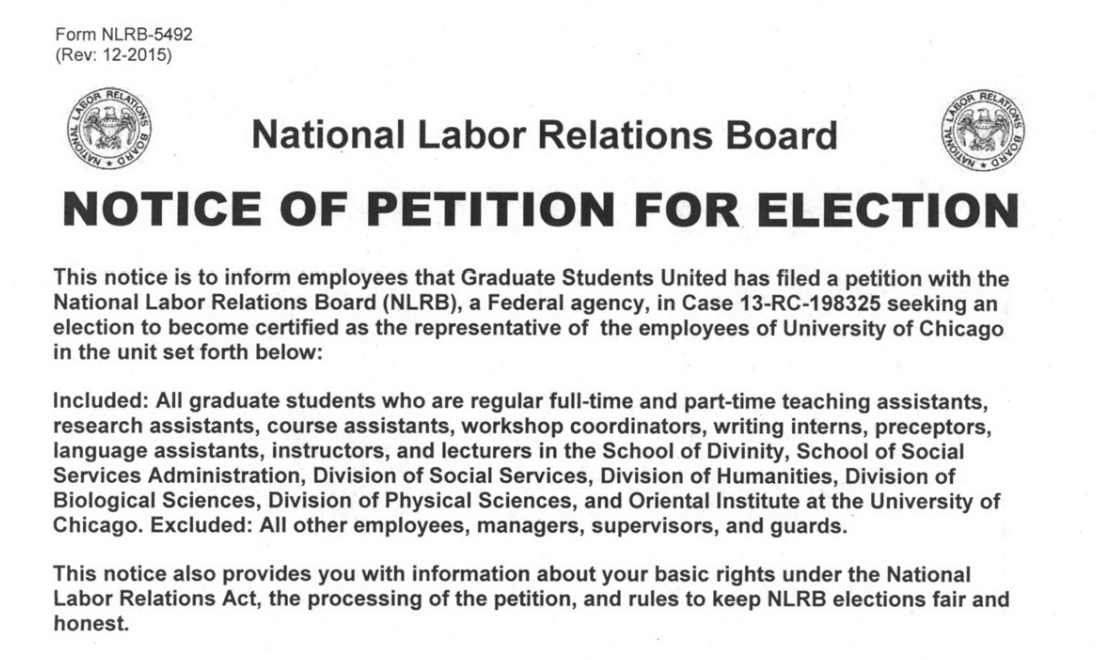Many of us are familiar with the concept of elections and have cast ballots for candidates or concepts we support, whether for President or American Idol. Like many elections, there are ballots and people who cast votes to certify a union and there are a number of steps and bureaucratic machinations before it’s time to vote. What are those steps and what kind of timeline should you anticipate?
What to expect when you’re expecting a union election
Exact timelines vary for a number of reasons - holidays or weather events can close offices and both unions and employers can request reasonable postponements with the National Labor Relations Board (NLRB).
But now that we’ve got that caveat out of the way, here are the major steps and a typical timeline for a union election. Days refer to business days, not calendar days. Also, if your boss is cooperative, this hypothetical timeline will be much shorter, but they normally aren't:
- On day 1: Union organizers submit a Representation Petition and demonstrate a Showing of Interest (typically authorization cards) with their employer and regional NLRB office. The Showing of Interest proves that workers want a union, otherwise anyone could file for a union election!
- By day 14: Within 14 days of receiving a petition, the NLRB sends a letter to inform the employer that workers have filed for an election and that a hearing will be scheduled. Within 5 days of receiving the notice from the NLRB, the employer must post and distribute (bulletin board, email, etc) a Notice of Petition for Election in the workplace.

- By day 22: Within 8 days of receiving notice from the NLRB, the employer files a Statement of Position that describes any issues that they intend to contest in the hearing. They may argue that there should be more or less employees included in the bargaining unit, for example. The union files its own Statement of Position responding to these issues 3 days before the hearing begins.
- Not every election involves a hearing. If there are no contested issues, the NLRB will facilitate the execution of an Election Agreement.
- By day 33: The Pre-Election Hearing is held within 14 days - or as soon as practicable - after a Notice of Petition of Election has been issued. Pre-election hearings include witnesses and testimony so that the Board Agent can issue a ruling on the contested issues. Hearings can take days, weeks, or months - depending on the complexity of the issues and number of issues raised.
- An NLRB Regional Agent rules on the issues raised in the hearing (such as who will be eligible to vote) and formally issues a Direction of Election. Once an election has been directed, the employer has 5 days to provide a list of eligible voters and their contact information to the NLRB and the union.
- The employer must also post and distribute a Notice of Election in the workplace at least 3 days before the voting period starts. The Notice of Election replaces the Notice of Petition for Election (jargon!) and includes information like the date, time, and location to cast ballots.

- The Regional Board office sets a date and time for the vote count. Ballots are tallied by NLRB staff with representatives from both the union and employer present.
- Both sides have 5 days to file objections and provide proof (like voter intimidation or surveillance, for example). If there are objections - and sufficient proof to back them up - the Board may hold a Post-Election Hearing.
- If there are no objections, the union is certified by the NLRB within 14 days of the vote count (assuming a majority votes yes!).
TL; DR: It can take months from the date of filing with the NLRB before the results are official.
If you find this to be overwhelming, the Board put together a flowchart of the whole process, which you can see here.
Always be organizing!
Studies have found that the more time that elapses between filing for an election and holding the election, the less likely a union is to win that election/A longer window gives the employer a better chance to build a campaign against the union. Unions can still prevail in elections with lengthy time periods, which is why a strong ground game is so important.
Your election campaign starts at the same time as your organizing campaign. Signing a union card should be explained as a show of support for unionizing. People shouldn’t sign a card just to get an election. Union cards are not a request for more information - because the person signing a card is authorizing the union as the collective bargaining representative (that’s why they can be used to request voluntary recognition). A majority of people signing cards should indicate that a majority of workers intend to vote yes in an election.
That said, you want a specific campaign plan to sustain engagement through the numerous steps leading up to the election. Here’s an example of how to space out your actions so that you’re building momentum without burning people out.
- Keep people updated on the process through public communications, like announcing that there will be a union election, and individual conversations and assessments with members
- Release “I’m Voting Yes” materials (testimonials from members planning to vote yes)
- Give out “Union Yes” buttons and have a button day and post selfies
- Demonstrate solidarity from community members (are union members at similar workplaces/industries, is there a faith-based or community group to connect with?)
- Confirm when and how people plan to vote (Get! Out! The! Vote!).
You know what they say about best laid plans
At face value, elections are neutral and objective processes where a group of people make an informed decision between two parties. However, an employer who campaigns against a union is not simply sharing information or educating workers. Bosses have the resources and access to workers to fight organizing efforts, often stretching every step of the legal process to create delays, fears, and frustration.
So, don’t jump right to an election! Take the time to build support and a strong unit that can and will prevail in the end.



